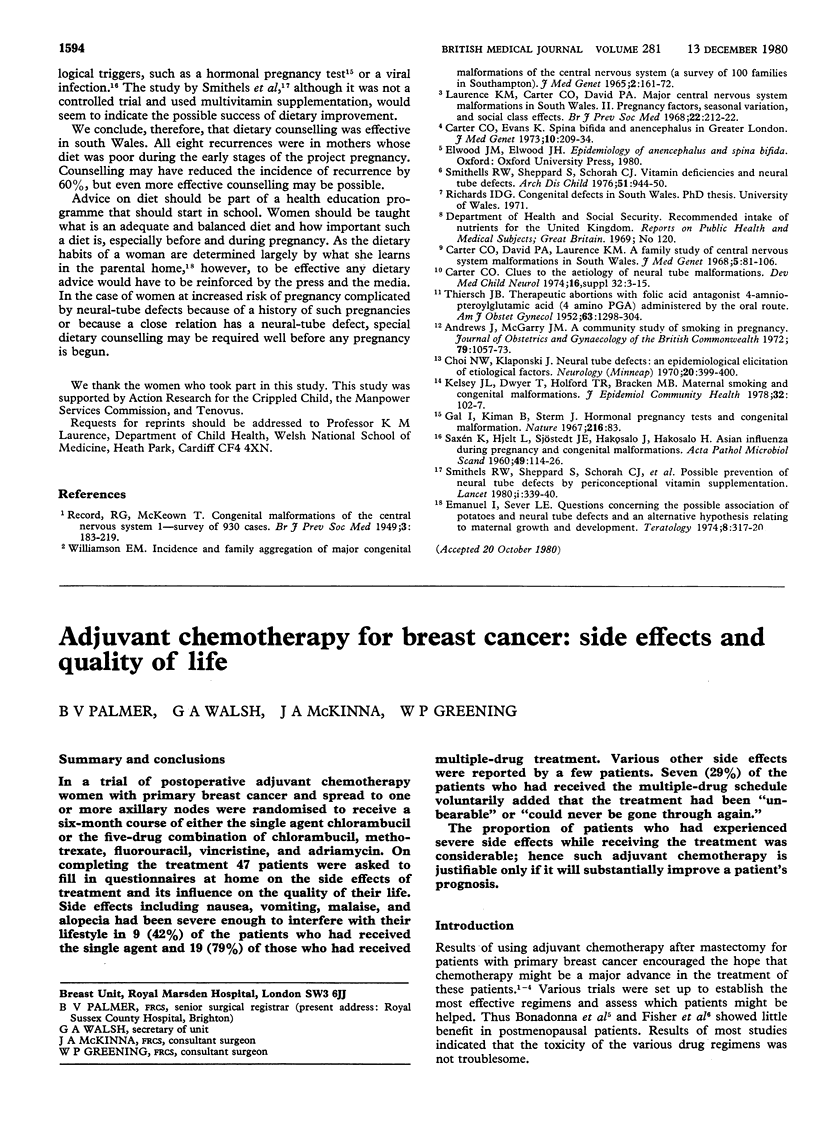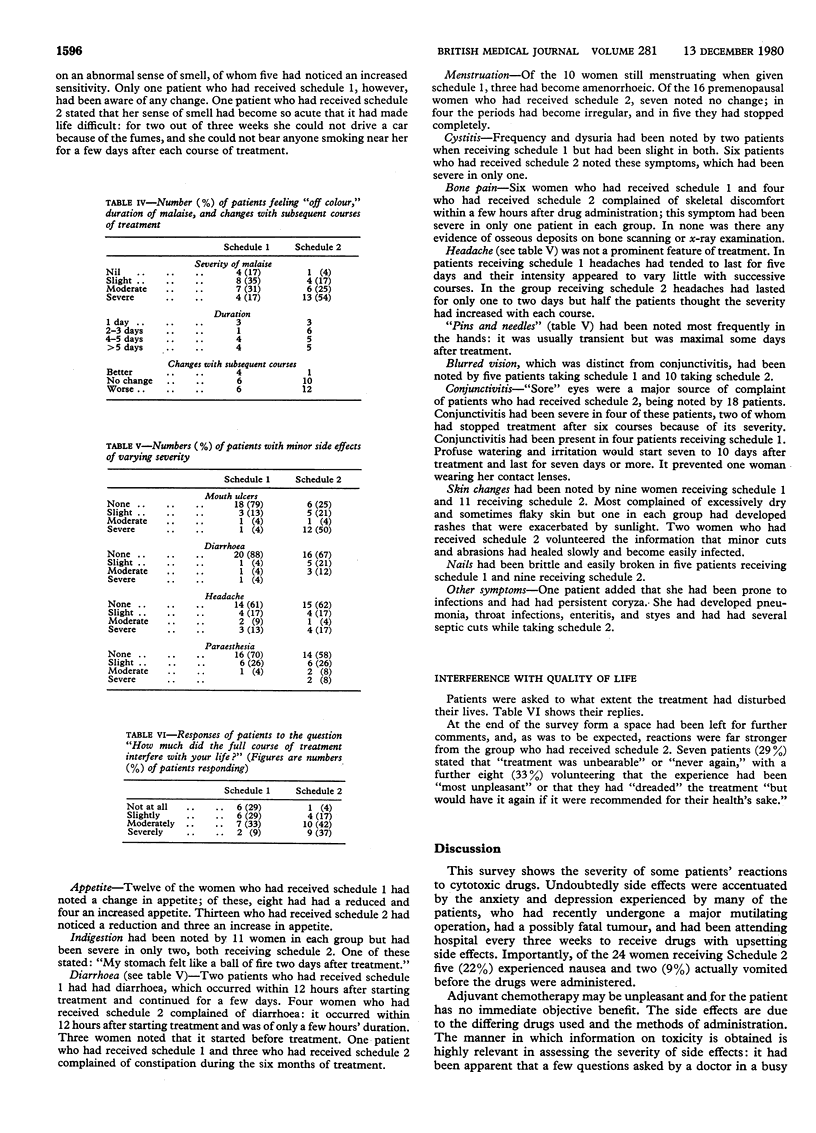Abstract
In a trial of postoperative adjuvant chemotherapy women with primary breast cancer and spread to one or more axillary nodes were randomised to receive a six-month course of either the single agent chlorambucil or the five-drug combination of chlorambucil, methotrexate, fluorouracil, vincristine, and adriamycin. On completing the treatment 47 patients were asked to fill in questionnaires at home on the side effects of treatment and its influence on the quality of their life. Side effects including nausea, vomiting, malaise, and alopecia had been severe enough to interfere with their lifestyle in 9 (42%) of the patients who had received the single agent and 19 (79%) of those who had received multiple-drug treatment. Various other side effects were reported by a few patients. Seven (29%) of the patients who had received the multiple-drug schedule voluntarily added that the treatment had been "unbearable" or "could never be gone though again." The proportion of patients who had experienced severe side effects while receiving the treatment was considerable; hence such adjuvant chemotherapy is justifiable only if it will substantially improve a patient's prognosis.
Full text
PDF



Selected References
These references are in PubMed. This may not be the complete list of references from this article.
- Bonadonna G., Brusamolino E., Valagussa P., Rossi A., Brugnatelli L., Brambilla C., De Lena M., Tancini G., Bajetta E., Musumeci R. Combination chemotherapy as an adjuvant treatment in operable breast cancer. N Engl J Med. 1976 Feb 19;294(8):405–410. doi: 10.1056/NEJM197602192940801. [DOI] [PubMed] [Google Scholar]
- Bonadonna G., Rossi A., Valagussa P., Banfi A., Veronesi U. The CMF program for operable breast cancer with positive axillary nodes. Updated analysis on the disease-free interval, site of relapse and drug tolerance. Cancer. 1977 Jun;39(6 Suppl):2904–2915. doi: 10.1002/1097-0142(197706)39:6<2904::aid-cncr2820390677>3.0.co;2-8. [DOI] [PubMed] [Google Scholar]
- Fisher B., Carbone P., Economou S. G., Frelick R., Glass A., Lerner H., Redmond C., Zelen M., Band P., Katrych D. L. 1-Phenylalanine mustard (L-PAM) in the management of primary breast cancer. A report of early findings. N Engl J Med. 1975 Jan 16;292(3):117–122. doi: 10.1056/NEJM197501162920301. [DOI] [PubMed] [Google Scholar]
- Fisher B., Glass A., Redmond C., Fisher E. R., Barton B., Such E., Carbone P., Economou S., Foster R., Frelick R. L-phenylalanine mustard (L-PAM) in the management of primary breast cancer. An update of earlier findings and a comparison with those utilizing L-PAM plus 5-fluorouracil (5-FU). Cancer. 1977 Jun;39(6 Suppl):2883–2903. doi: 10.1002/1097-0142(197706)39:6<2883::aid-cncr2820390676>3.0.co;2-9. [DOI] [PubMed] [Google Scholar]


